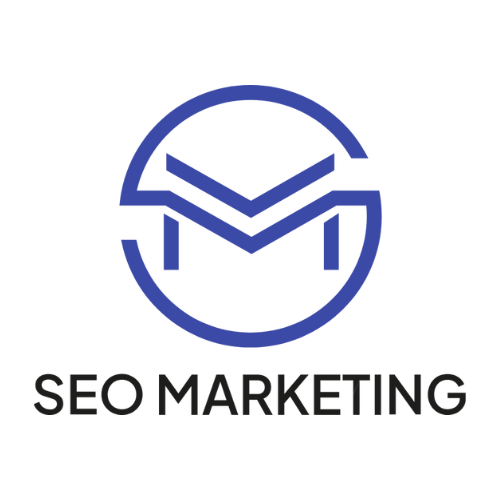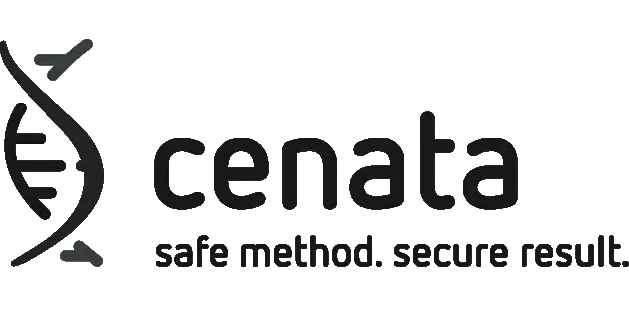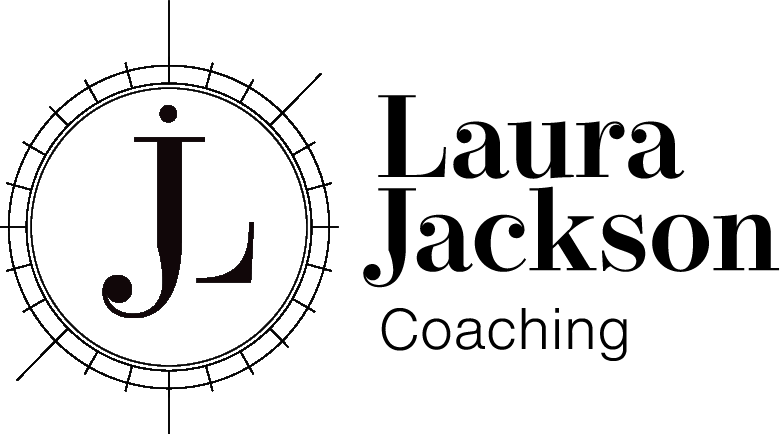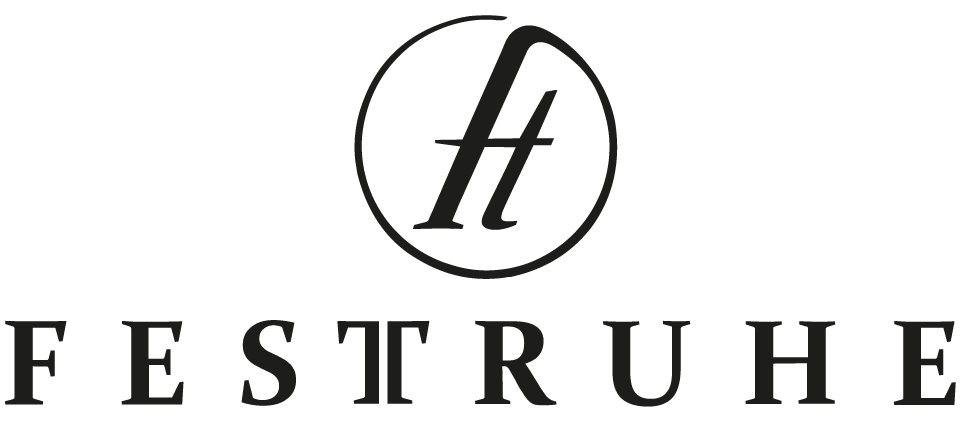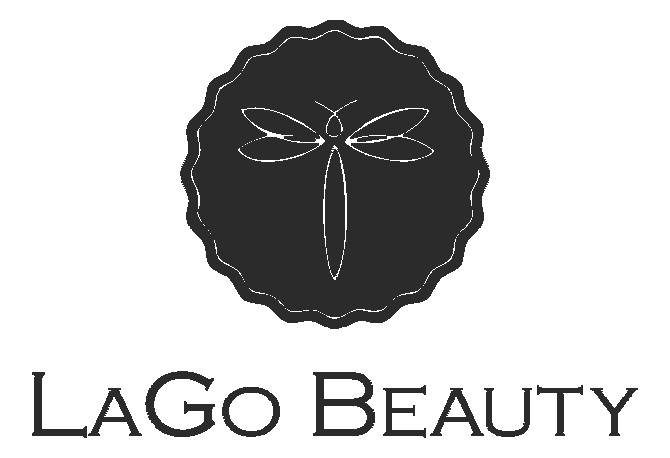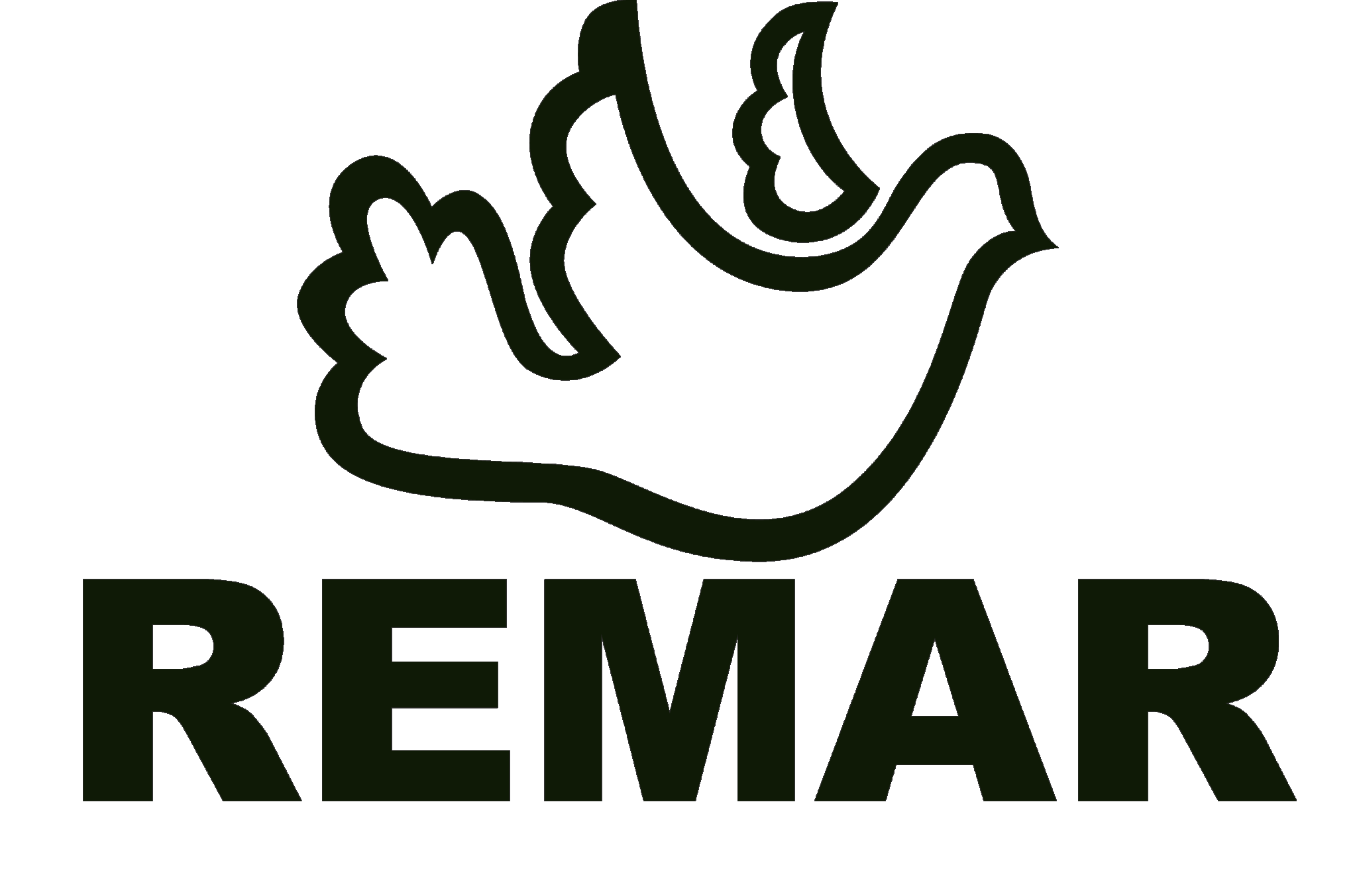SEO – Web design – Google Ads – Social media
Google Ads Agency: Immediately more customers through targeted advertising
Maximum visibility and measurable results through professional Google Ads support.
Individual marketing solutions
SEO
With strategic SEO, we secure top rankings on Google
and ensure more qualified customer inquiries.
Web design
We create modern websites that strengthen your brand and turn visitors directly into customers with good design.
Social Media
We create a strong brand on social media and turn your followers into long-term
loyal customers.
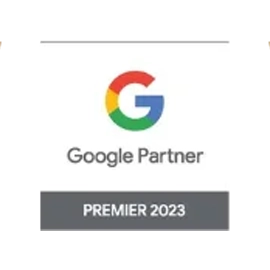
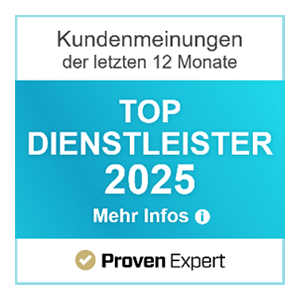
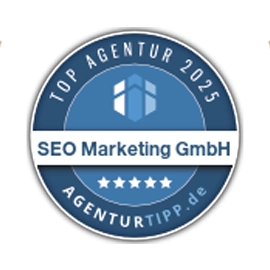
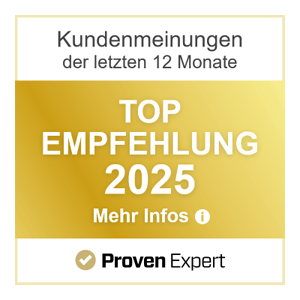
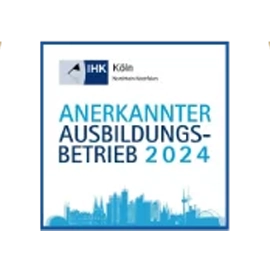
Why your Google Ads are not delivering the desired results
Are you already running Google Ads but just burning money without any qualified inquiries coming in? Many companies are frustrated because their Google Ads campaigns are expensive and don’t deliver the desired results in the end. You see your competitors constantly in the top positions and wonder how they manage this.
This is exactly where we come in as your Google Ads agency. Successful advertising on Google is no coincidence, but the result of a precise marketing strategy. We ensure that your Google Ads budget is used optimally by presenting your ads precisely to users who are actively searching for your solutions with a high purchase intent.





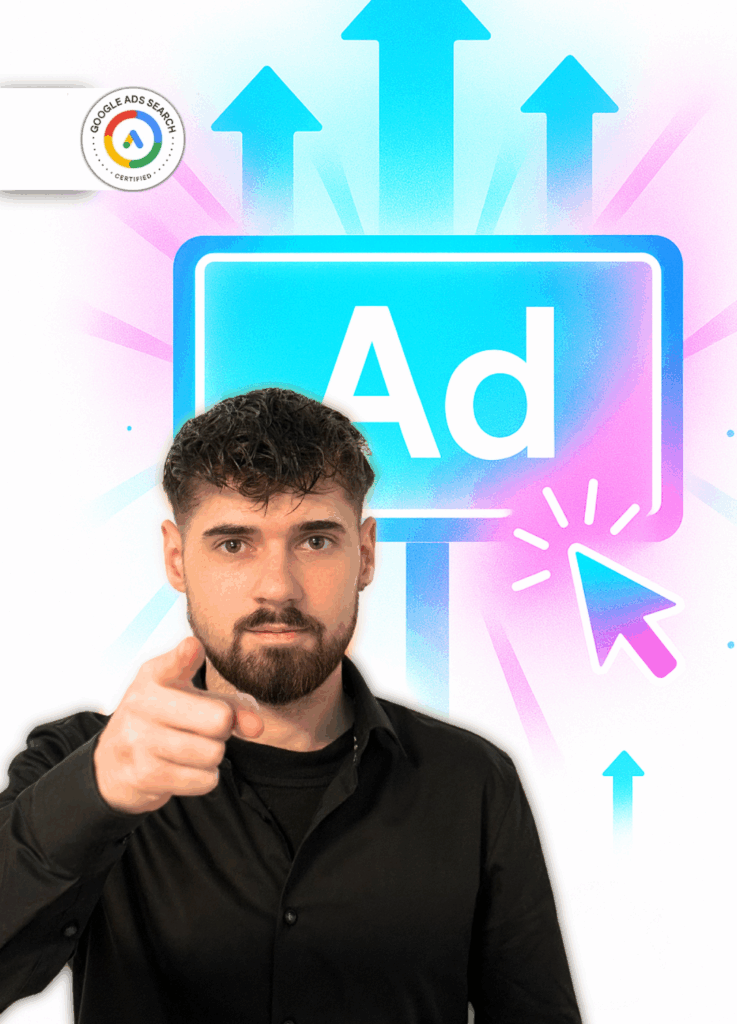
Be the first answer for prospective buyers who are ready to buy
The biggest advantage of Google Ads is that you can reach a potential customer at the exact moment they have a problem and are looking for a solution. Unlike social media or traditional advertising, you don’t interrupt anyone, but offer a direct answer. Whoever is visible first usually wins the order.
As an experienced agency for Google Ads, it is our job to maximize the performance of your campaigns. This approach is also known as performance marketing. We take care of the strategic keyword selection, write convincing ad texts and optimize your bids so that you achieve the best possible return on every euro invested.
Google Ads is not a cost factor – it is predictable growth
Many entrepreneurs see Google Ads as an uncontrollable expense. We see it as one of the fastest and most measurable channels in online marketingto acquire new customers in a predictable way. Every click, every inquiry and every sale can be can be tracked precisely. This gives you full control and allows you to make data-based decisions for the growth of your company.
Direct contact with people interested in buying:
We target your campaigns so that you reach users who are about to make a purchase decision. Instead of hoping for unspecific traffic, we concentrate on keywords that signal a clear intention. The result are not just clicks, but valuable calls, inquiries and sales right from the start.
Get the most out of every euro of your advertising budget:
You decide how much you want to invest – we make sure that this budget works as efficiently as possible. Through continuous optimization, we reduce your costs per request and increase the return on investment. We develop successful Google Ads campaigns that are profitable for you.
To the top of the search results in just a few days:
While SEO and the improvement of organic search results are a long-term strategy, Google Ads delivers immediate visibility. Your ads can appear in the top positions within a very short time. This allows you to react quickly to market changes and overtake your competitors in a targeted manner.
Analyze your website for free – more visibility now!
Have your website analyzed free of charge and discover optimization potential immediately. Get a quick SEO check with clear tips for better rankings, more visibility and more customers - free of charge, professionally and without obligation.
Our process: data-based, transparent and geared towards your success
Successful campaigns are the result of a structured process. We work closely with you and make every step transparent for you.
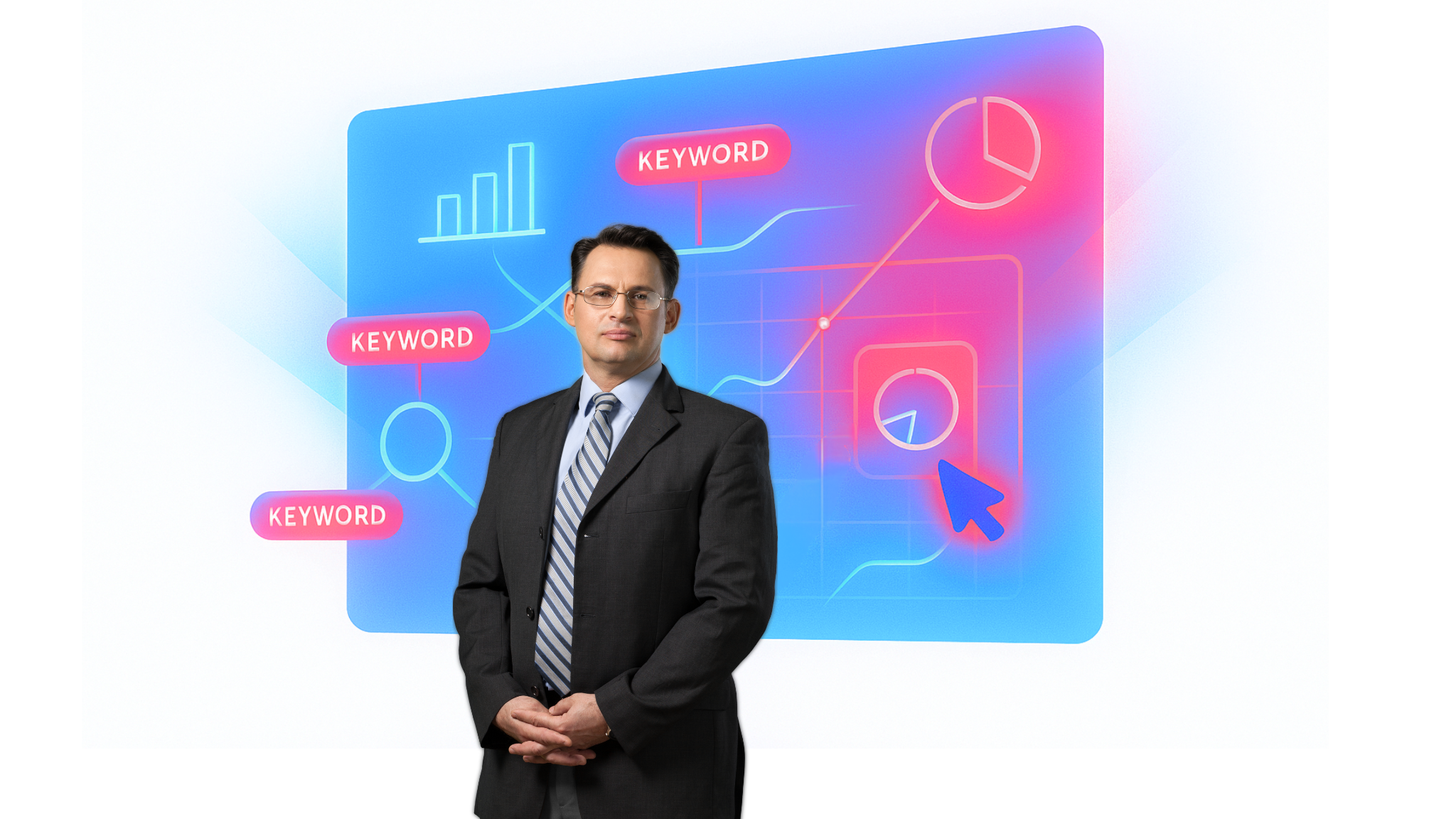
Strategy & keyword analysis (planning):
We start with an in-depth understanding of your business objectives. Based on this, we develop a customized Google Ads strategy and research the search terms that will bring you the most profitable customers.

Campaign setup & ad creation (the implementation):
Our experts create a clean campaign structure and write compelling ad copy that encourages clicks. We set up all the tracking so that we can accurately measure the success of each campaign.


Ongoing optimization & management (improvement):
We monitor and optimize your campaigns on a daily basis. This include adjusting bids, testing new ads (A/B testing) and excluding unprofitable search terms to protect your budget.

Reporting & scaling (growth):
You receive regular and comprehensible reports from us that show you what works. Based on this data, we work with you to develop ads strategiesto further expand successful campaigns.

Are you ready for predictable new customers through Google?
Stop burning your advertising budget and hoping for chance. With a professionally managed Google Ads campaign, you can reach your customers exactly when they need you most.
Request a free and non-binding potential analysis now. We will show you the untapped opportunities for your company with Google Ads.
Frequently asked questions (FAQ)
What do Google Ads cost?
The costs are made up of the advertising budget for Google and the costs for support from an agency. Your Google Ads budget is flexible and can be adjusted at any time. How much you should invest depends on your industry and your goals. We will give you a realistic estimate for a sensible starting budget.
What exactly does a Google Ads agency do?
Good ads agencies do more than just “place ads”. We develop a strategy, research keywords, create ad texts, set up tracking, continuously optimize campaigns to reduce costs and create comprehensible reports. As one of the experienced SEA agencies we act as your strategic partner for profitable growth.
Is Google advertising worthwhile for my company?
Google Ads is worthwhile for most companies that want to acquire new customers quickly. We have experience in various industries – from local service providers to online stores and B2B companies. If your target group searches on Google, we can reach them with targeted advertising.
How quickly do I see results with Google Ads?
This is the biggest advantage of Google Ads (formerly known as Google Adwords): You see extremely fast Results. As soon as the campaign is live, which is often possible within a few days, your ads can appear in the top positions and generate initial inquiries long before anything happens in the SEO area.
Learn more
Reach target groups
Which product or service brings you the highest margin? Keyword-based ads can be used to target both individual services and specific search queries directly. This allows you to reach target groups individually adapted to your budget. Google ads is an excellent way to run a successful campaign and can achieve immediate results with little effort. SEO Marketing GmbH will create and manage your campaign. So you don’t have to worry about anything – except processing your new orders!
Evaluation and analysis
With helpful tools such as Google Analytics, you can not only see how much traffic is generated by your advertisements. Track the success of your campaign and find out exactly where your search queries are coming from in just a few clicks. This way you know exactly which region your offer is particularly interesting and where it is worth taking further measures. You can also see how long visitors spend on your website, which pages are visited most frequently and much more helpful information!
Consulting
Based on this information, we will provide you with recommendations for action to further optimize your website. Do you have a lot of visitors to your website, but they don’t stay long? Perhaps your design is missing the target group or your texts are too long. Do your visitors stay on your website for a long time, but don’t complete a purchase? A few well-placed contactor buy buttons could solve this problem in no time at all. Ask your contact person for detailed advice on what the results could be.
High-quality inquiries through search engine advertising
Let SEO Marketing GmbH advise you on the advantages and possible uses of search engine advertising. Your personal contact will provide you with detailed and easy-to-understand information about the benefits of Google ads for you. Whether as part of a holistic campaign or as a stand-alone ad, your contact will provide you with expert advice on your options so that we can make informed decisions together.
Individual search engine advertising
- Immediate success through Google ads
- Customized campaigns, adapted to your budget
- Highlight services through keywords
- Successfully increase your visibility
Holistic marketing support
- Detailed marketing advice
- Holistic strategies
for your company - Long-term successes
- One contact for all concerns
What is search engine advertising (SEA)?
Search engine advertising (SEA) is a form of online marketing in which advertisers place ads that are displayed in search engine results when users search for certain keywords or terms. In contrast to search engine optimization (SEO), in which organic search results are improved by optimizing website content and other factors, SEA is paid advertising in which advertisers pay for the placement of their ads in search engine results.
The ads are typically displayed near or above the organic search results and are often labeled as “Ad”, “Sponsored” or with a similar label. They may also appear in other areas of the search engine results, such as in the sidebar or at the bottom of the page, depending on the advertising options offered by the search engine.
One of the most popular platforms for SEA is Google Ads (formerly known as Google AdWords), which allows advertisers to place ads in Google’s search results. In addition to Google, other search engines such as Bing also offer their own advertising platforms for SEA.
The success of SEA depends on how well the ads are matched to users’ search queries and how effectively they appeal to the target group. Advertisers can select keywords for which their ads should appear and can also specify demographic characteristics, locations and other criteria to ensure that their ads are only delivered to relevant users.
The cost of SEA can vary depending on the keywords chosen and the competition for these keywords. Advertisers typically bid on keywords in an auction format, with the cost per click (CPC) determined by the bid and the quality of the ads. The cost can also be limited by the advertiser’s budget, which determines how much they want to spend per day or per campaign.
Overall, search engine advertising is an effective way for companies to increase their visibility in search engine results and reach potential customers by placing targeted ads that are tailored to users’ search queries. With the right strategy and optimization, advertisers can increase their reach, drive qualified traffic to their website and ultimately achieve their marketing goals.
Which search engines offer advertising opportunities?
Various search engines offer advertising options that allow companies to place targeted ads and increase their visibility in search results. One of the best-known platforms for search engine advertising is Google Ads, formerly known as Google AdWords. Google Ads allows advertisers to place ads in Google’s search results that target specific keywords, locations, demographics and other criteria. The ads can be placed in different formats such as text ads, image ads, video ads and shopping ads to reach the different needs and preferences of the target audience.
Another important platform for search engine advertising is Microsoft Advertising, formerly known as Bing Ads. Microsoft Advertising allows advertisers to place ads in Bing search results and on websites in the Bing advertising network. Similar to Google Ads, advertisers can target their ads based on keywords, locations, demographics and other criteria to effectively reach their target audience.
Yahoo Gemini is another search advertising platform that offers advertisers the opportunity to place ads in Yahoo’s search results and on websites in the Yahoo advertising network. Gemini also allows advertisers to target their ads based on user demographics, interests and behaviors to precisely target their audience.
In countries such as Russia and China, there are also specific search engine advertising platforms such as Yandex.Direct and Baidu PPC. Yandex.Direct is the advertising platform of Yandex, the leading search engine in Russia, while Baidu PPC is the advertising platform of Baidu, the largest search engine in China. Advertisers can place ads that appear in the search results of these search engines, as well as on websites in the respective advertising network, to reach their target audience in these markets.
Overall, these different search engine advertising platforms offer advertisers a variety of ways to increase their visibility in search results and effectively target potential customers. Through targeted ads and precise targeting, companies can achieve their marketing goals and increase their sales.
The choice of the right platform(s) depends on the company’s objectives, target group and budget.
How does organic search differ from paid search in search engine advertising?
Organic search and paid search are two different approaches to search engine advertising, each with their own characteristics and advantages.
Organic search:
- Organic search refers to the natural, unpaid search results that are generated by the search engine based on their relevance to the search query entered.
- Positioning in the organic search results is achieved through search engine optimization (SEO), in which the website content and other factors are optimized so that it ranks better for certain keywords or search terms.
- Placement in the organic search results is free and is based on the relevance and quality of the content as well as other factors such as the authority of the website and the user experience.
- Organic search results are usually displayed below the paid ads and can have a higher credibility and trustworthiness among users as they are not labeled as ads.
Paid search:
- Paid search refers to ads that advertisers pay for to be displayed in search engine results when users search for specific keywords.
- Placement in the paid search results is achieved by placing ads via advertising platforms such as Google Ads, Bing Ads or other search engine advertising platforms.
- The ads are usually displayed above or next to the organic search results and are often labeled as “Ad” or “Sponsored”.
- Positioning in the paid search results is based on an auction model in which advertisers bid to appear for certain keywords. The cost per click (CPC) is determined by the bid and the quality of the ads.
- Paid search results allow advertisers to quickly increase their visibility and deliver targeted ads to a specific audience. They provide an immediate presence in search results, regardless of the organic search position of the website.
Overall, organic search and paid search differ in their approach, cost structure and placement in search results. Both approaches have their own advantages and can be used together to maximize the visibility of a website in search engines and effectively target potential customers.
The basics of search engine advertising
Search engine advertising (SEA), also known as pay-per-click advertising (PPC), is a form of digital marketing in which ads are placed in search engine results pages (SERPs). This advertising strategy allows companies to showcase their products or services to a highly targeted audience that is actively searching for similar solutions. SEA is a fast and efficient way to generate visibility and direct traffic, unlike search engine optimization (SEO), which often takes more time and focuses on long-term results.
Definition of search engine advertising (SEA)
SEA refers to the practice of placing paid ads that are displayed in search engines above or next to organic search results. These ads are often targeted to specific keywords so that they appear when a user performs a search that matches those keywords. The placement of these ads is determined by an auction process where advertisers bid on the keywords they want to target. The cost of these ads is typically based on cost-per-click (CPC), i.e. the advertiser only pays when the ad is clicked.
Differences to search engine optimization (SEO)
Although both SEA and SEO aim to increase visibility in search engines and drive more traffic to a website, there are fundamental differences in their approach and goals:
Timeframe and results: SEA offers immediate results. As soon as a campaign is live, ads can appear and generate clicks. SEO, on the other hand, is a long-term process that can take months before significant improvements in search rankings or traffic become visible.
Control and flexibility: With SEA, advertisers have full control over the budget, target group selection and placement of their ads. They can quickly adjust campaigns to respond to market changes or business needs. SEO is less controllable as rankings depend on search engine algorithms and can be influenced by external factors such as competitor activity and algorithm updates.
Cost structure: SEA is chargeable and requires an ongoing budget to place ads. SEO also requires investment (for example in content creation and website optimization), but once rankings have been achieved, they can generate organic traffic without having to pay for it directly.
Sustainability: Traffic from SEA ends as soon as the budget is used up or the campaign is paused. SEO, on the other hand, can have a lasting effect, as the rankings achieved once and the resulting organic traffic can remain even without continuous investment.
In practice, SEA and SEO often complement each other in a comprehensive search engine marketing strategy (SEM). While SEA provides immediate visibility and targeted traffic, SEO builds long-term presence and credibility. Together, they provide a robust solution for businesses to maximize their online presence and achieve both short-term and long-term marketing goals.
Important platforms for search engine advertising:
Search engine advertising (SEA) is carried out on various platforms, each with its own unique features and benefits. Leading platforms include Google Ads, Bing Ads and a variety of other options that appeal to different segments and audiences. Here is a comprehensive overview of these platforms and what they each offer advertisers.
Google Ads
Google Ads, formerly known as Google AdWords, is the dominant platform in the field of search engine advertising. Google is the world’s most widely used search engine, and Google Ads therefore offers enormous reach and the opportunity to reach a wide range of target groups. The platform allows advertisers to be visible in search results, on partner websites and in mobile apps. Key features include:
Keyword targeting: Advertisers can select specific keywords to target their ads at.
Diverse ad formats: In addition to text ads, Google also offers shopping ads, video ads and app promotion ads.
Comprehensive targeting options: Users can be targeted based on location, language, device type and many other criteria.
Performance measurement and analytics: Google Ads offers detailed analytics tools that allow advertisers to monitor and optimize the performance of their campaigns.
Bing Ads
Bing Ads, now known as Microsoft Advertising, is another major platform for search engine advertising. Although Bing has less market share than Google, it still offers significant advantages, especially in certain demographic and geographic markets. Bing Ads is similar to Google Ads in many ways, but there are some distinguishing features:
Cost-effectiveness: Due to less competition, the cost per click (CPC) on Bing is often lower than on Google.
Integration with Microsoft products: Bing Ads is closely integrated with other Microsoft products such as Windows and Office, which can offer advantages for certain target groups.
Access to a different audience: Bing reaches some demographics better than Google, particularly older internet users and those in certain industries.
Other platforms
In addition to Google and Bing, there are a number of other platforms that offer SEA services. These include:
Yahoo! advertising: Even though Yahoo! has lost popularity in recent years, it remains a relevant platform for certain target groups.
DuckDuckGo: Known for its focus on privacy, DuckDuckGo offers advertising options that are privacy-respecting and appeal to a growing user base.
Amazon Advertising: Amazon is a key platform for e-commerce companies to advertise products directly in Amazon’s search results.
Each of these platforms has its specific strengths and can be differently effective depending on the objective and target group of the campaign. Advertisers should consider the specifics of each platform and adapt their SEA strategy accordingly to achieve the best possible results.
Keyword research for SEA:
Keyword research is a fundamental component of search engine advertising (SEA) and plays a crucial role in the effectiveness of any campaign. By selecting the right keywords, companies can ensure that their ads are displayed to the right audiences at the right time. Here are some best practices for identifying and selecting effective keywords for SEA campaigns.
Understanding the user intention
First, it is important to understand the intent behind the search queries that potential customers might use. Keywords can be roughly divided into three categories:
Informative: The user searches for information (e.g. “How to change a light bulb”).
Navigational: The user searches for a specific website or brand (e.g. “Amazon customer support”).
Transactional: The user intends to make a purchase or other type of transaction (e.g. “buy LED light bulbs online”).
Transactional keywords are particularly valuable for SEA campaigns, as they often lead to higher conversion rates. However, informative and navigational keywords should not be neglected either, especially if they can contribute to branding or guidance through the customer journey.
Use of keyword research tools
To identify effective keywords, there are various tools that can provide valuable data and insights. Some of the most popular are:
Google Keyword Planner: This tool from Google Ads provides data on search volume, competition and estimated cost per click (CPC) for various keywords.
SEMrush: A comprehensive SEO and SEA platform that provides detailed information on keyword trends, competitive analysis and more.
Ahrefs: Similar to SEMrush, Ahrefs offers deep insights into keyword data and competitor landscapes.
These tools not only help to identify highly relevant keywords, but also to recognize trends and seasonal fluctuations in keyword demand.
Analysis of competitors
Another important step in keyword research is to analyze what is working for your competitors. Tools like SEMrush and Ahrefs make it possible to see the keywords that competitors are running ads for. These insights can help identify gaps in your own campaigns or decide whether it makes sense to invest in certain highly competitive keywords.
Selection and grouping of keywords
Once a list of potential keywords has been compiled, it is important to select them carefully and divide them into relevant groups. Keywords should be grouped by topic or user intent to facilitate the creation of targeted ad groups within an SEA campaign. This structuring not only improves the relevance and quality of the ads, but can also optimize the cost per click (CPC) and improve the overall performance of the campaign.
Ongoing optimization
Keyword research is not a one-off process. It is crucial to regularly monitor the performance of the selected keywords and optimize the lists based on performance data. This includes adding new, promising keywords, pausing keywords with poor performance and adjusting bids according to the effectiveness of the keywords.
By using these methods, companies can ensure that their SEA campaigns are built on a solid foundation of effective keywords, which is crucial for success in search engine advertising.
Ad formats in search engine advertising:
Search engine advertising (SEA) offers a variety of ad formats that help advertisers achieve their specific marketing goals. Each format has its own characteristics and benefits that make it suitable for different types of campaigns and audiences. Here’s an overview of the most common ad formats in search engine advertising, including text ads, Shopping ads and various extensions.
Text ads
Text ads are the most basic and widely used format in search engine advertising. They usually consist of a headline, an ad URL and a description. The simplicity of text ads makes them extremely effective for reaching a wide audience. They are easy to create and can be quickly adapted to respond to changes in campaign strategy or user behavior. Text ads are particularly effective for generating clicks and increasing traffic to websites.
Shopping ads
Shopping ads are ideal for e-commerce companies that want to sell products directly. These ad formats show a picture of the product, the price, the product name and sometimes reviews or special offers. Shopping ads are generated from the product information stored in the Google Merchant Center. They appear in Google Shopping or next to search results when someone searches for a relevant product. These visually appealing ads can directly influence the purchase decision by providing the user with important information before they even click on the ad.
Extensions
Ad extensions are additions to the standard text ads that can display additional information about a company. Some of the most common extensions include:
Sitelink extensions: These allow advertisers to insert additional links to other pages on their website below the main ad. They are useful to give users more options and lead them deeper into the website.
Callout extensions: They provide additional space to highlight special offers or unique selling points without distracting from the ad’s main messaging.
Location extensions: These show the address of a business, which can be particularly useful for local businesses that want to encourage offline visits.
Call extensions: These add a phone number to the display, which encourages direct calls.
Other ad formats
Responsive Search Ads: This relatively new ad format allows advertisers to enter multiple headlines and descriptions, from which Google then automatically compiles the best-performing combination.
Dynamic Search Ads: These ads use the content of a website to create and deliver the ads, which is particularly useful for websites with a large number of products or services.
These different ad formats offer advertisers numerous opportunities to effectively reach and engage their target groups. Choosing the right ad format depends on the specific goals of a campaign, the budget and the preferences of the target audience. By experimenting with different formats and continuously optimizing the ads, companies can maximize the performance of their SEA campaigns.
Target group targeting in SEA:
Audience targeting in search engine advertising (SEA) is a crucial element that determines the success of a campaign. Through precise targeting, advertisers can ensure that their ads are displayed to the most relevant and potentially most interested users. This not only leads to a more efficient use of budget, but also to higher conversion rates. Here are some effective techniques for audience targeting in SEA:
Demographic targeting
Demographic targeting allows advertisers to serve ads based on demographic data such as age, gender, education level and income level. This type of targeting is particularly useful in markets where certain products or services are tailored to specific age groups or genders. For example, a luxury brand might target its ads to higher income users, while a company offering study materials might focus on the student age group.
Geographic targeting
Geographic targeting, also known as geo-targeting, allows ads to be delivered to users in specific geographic locations. This can range from large geographic regions such as countries to very specific locations such as cities or even neighborhoods. For local businesses, such as restaurants or craft businesses, geo-targeting is essential as it allows them to target only those customers who can actually use their services.
Interest-based targeting
Interest-based targeting allows advertisers to show their ads to users who have specific interests or preferences. This information can be derived from previous searches, websites visited and online activities. For example, a sporting goods manufacturer could target ads specifically to users who have visited sports and fitness websites.
Behavior-based targeting
This technique goes one step further by analyzing the actual online behavior of users, including the pages they have visited, the products they have viewed or added to their shopping cart, and the content they have interacted with. Behavioral targeting is particularly effective because it allows advertisers to target users based on their demonstrated interest or purchase intent.
Remarketing
A special form of behavioral targeting is remarketing (or retargeting), in which ads are directed specifically at users who have previously interacted with the brand or product but have not converted. By retargeting these users, companies can increase the chances of a conversion.
Keyword targeting
Keyword targeting is at the heart of every SEA campaign. Here, advertisers select specific search terms for which they want their ads to appear. This requires thorough keyword research to ensure that the chosen keywords are relevant and accurately reflect the interest and intentions of the target audience.
By combining these targeting techniques, advertisers can refine their SEA campaigns and tailor their advertising messages precisely to the needs and interests of their target groups. This leads to a more efficient use of the advertising budget and improves the overall performance of the campaigns.
Bidding strategies for SEA:
In search engine advertising (SEA), choosing the right bidding strategy is crucial for the success of your campaigns. Bidding strategies determine how much you spend on interactions with your ads and how your ads are prioritized within the search engine auctions. The most common bidding strategies include cost-per-click (CPC) and cost-per-acquisition (CPA), each offering different goals and approaches. Here is a detailed explanation of these strategies and how they are used in campaigns.
Cost-per-click (CPC)
Cost-per-click is one of the most frequently used bidding strategies in SEA. With this method, you only pay when someone clicks on your ad. CPC is particularly effective for campaigns that aim to increase website traffic. This strategy allows advertisers to link costs directly to the number of clicks received, making it easy to evaluate immediate campaign performance.
Application in campaigns:
Budget control: Set a maximum CPC bid to keep costs within your budget.
Keyword relevance: Adjust your CPC bids to the competitiveness and expected conversion potential of the keywords.
Test and adjust: Monitor performance and adjust bids to achieve an optimal balance between cost and traffic.
Cost-per-acquisition (CPA)
Cost-per-acquisition is a more advanced bidding strategy where you pay for a specific action or conversion, such as a sale, registration or other desired user action. CPA is ideal for advertisers who want to tie their advertising spend directly to measurable business results. This strategy helps to minimize risk as costs are directly linked to the achievement of business goals.
Application in campaigns:
Define target conversions: Clearly define which actions or conversions are valuable for your campaign.
Set up conversion tracking: Make sure you can effectively track conversions to measure CPA performance.
Optimization for conversions: Align your ads, landing pages and overall campaign strategy to maximize conversions.
Further bidding strategies
In addition to CPC and CPA, there are other strategies that can be used depending on specific campaign objectives and market conditions:
Cost-per-mille (CPM): Here you pay per thousand impressions, which is suitable for campaigns aimed at brand awareness.
Enhanced CPC (ECPC): This strategy automatically adjusts your manual bids to maximize conversions.
Target Return on Ad Spend (ROAS): With this advanced strategy, you set your bid to achieve a specific return on ad spend, ideal for highly targeted campaigns.
Choosing the right bidding strategy depends on your specific campaign goals, budget and risk appetite. A deep understanding of these strategies and continuous monitoring and adjustment of your campaigns are crucial to maximizing ROI and effectively achieving your SEA goals.
Budgeting for search engine advertising:
Effective budgeting is a critical aspect of successful search engine advertising (SEA). A well-planned budget not only helps to make the best use of financial resources, but also maximizes the effectiveness of advertising campaigns. Here are some practical tips for planning and controlling the budget in SEA campaigns that can help you achieve your advertising goals without exceeding your budget.
Determination of the overall budget
- Define your business goals: Clarify what you want to achieve with your SEA campaign. Whether it’s increasing website traffic, boosting sales or achieving a certain conversion rate, your goals will determine how you allocate your budget.
- Understand your target audience: Knowing your target audience – how and when they search – can help you use your budget more effectively. Consider seasonal trends or special events in your industry that could affect search volume.
- Competitive analysis: Look at what your competitors are doing. If you are in a highly competitive market, you may need a higher budget to stay visible.
Allocation and management of the budget
- Start with a test budget: Before allocating a large budget, run test campaigns to understand the effectiveness of different keywords, ad formats and target groups. This helps to minimize misspending.
- Set daily and monthly budgets: Google Ads and other SEA platforms allow you to set daily budgets that ensure you don’t spend more than you can afford. These can be adjusted to spend more on higher demand days or save on less busy days.
- Prioritize your campaigns: Not all campaigns are equally important. Allocate budgets based on the performance and ROI of previous campaigns. Invest more in high-performing campaigns and reduce the budget or pause low-performing campaigns.
Monitoring and adaptation
- Monitor performance: Monitor your campaigns regularly to ensure that the budget is being used effectively. Pay attention to key metrics such as clicks, conversions and average cost per click (CPC).
- Flexible budgeting: Be prepared to adjust your budget based on campaign performance. If certain keywords or ad formats are performing better, you may want to shift your budget there.
- Use automatic bidding strategies: Many SEA platforms offer automatic bidding strategies that work based on the target CPA (Cost Per Acquisition) or ROAS (Return on Ad Spend). These can help to use the budget more efficiently by adjusting bids in real time.
- Learning and iterating: SEA is an iterative process. Use the data and insights from your campaigns to refine your budgeting strategies and inform future decisions.
By applying these tips, you can ensure that your SEA budget is managed rationally and effectively, which not only controls costs but also ensures the best possible return on investment for your advertising spend.
Optimization of SEA campaigns:
Search engine advertising (SEA) optimization is critical to getting the best possible results from your ad campaigns. This requires continuous monitoring, adjustment and testing. Here are some best practices that can help you increase the efficiency and effectiveness of your SEA campaigns.
A/B testing
A/B testing, also known as split testing, is an effective way to test different elements of your ads and determine which variations perform best.
Test ad copy: Experiment with different headlines and description copy to see which get the highest click-through rate (CTR) and conversion rate.
Testing landing pages: Different elements on your landing page such as text, images, or call-to-action (CTA) buttons can be tested to identify the page with the highest conversion rate.
Keyword testing: Test different keyword strategies to determine which keywords deliver the best results in terms of traffic and conversions.
It is important to test only one variable at a time to ensure that you get clear data on which changes improve performance.
Targeted keyword targeting
The selection and management of keywords are crucial to the success of your SEA campaigns.
Keyword optimization: Regularly check the performance of your keywords and pause those that cause high costs but do not generate conversions.
Use of long-tail keywords: These more specific keywords often have less competition and a higher conversion rate, as the search intention is clearer.
Adaptation of bidding strategies
Effective bidding strategies are crucial to getting the most out of your budget.
Automated bidding strategies: Use platform tools like Google Ads to automatically adjust bids based on target CPA (cost-per-acquisition) or ROAS (return on ad spend).
Time of day and location adjustments: Adjust your bids to bid more at times or locations with a higher likelihood of conversion.
Use of ad extensions
Ad extensions improve the visibility and effectiveness of your ads by providing additional information or call actions.
Sitelink extensions: Provide additional links to specific pages on your website.
Callout extensions: Add additional descriptive text to highlight the benefits of your products or services.
Location extensions: Show your business address to attract local customers.
Ongoing performance evaluation
Regular monitoring and analysis of campaign data is essential to ensure the success of your SEA efforts.
Monitor performance metrics: Keep an eye on metrics such as click-through rate (CTR), conversion rate, average cost per click (CPC) and total spend.
Use analytics tools: Tools like Google Analytics provide deep insights into users’ behavior after clicking on your ads, including the actions they take on your website.
By implementing these best practices, you can improve the efficiency and effectiveness of your SEA campaigns, maximize your ROI and ensure that your ads reach the right audience and lead to the desired actions.
Measurement and analysis of SEA results:
Measuring and analyzing the results of search engine advertising (SEA) campaigns is crucial in order to understand the success of these initiatives and to be able to design future campaigns more effectively. To do this, it is important to monitor the right key performance indicators (KPIs) and use suitable analysis tools. Here are some essential KPIs and tools to help evaluate SEA campaigns.
Important key performance indicators (KPIs) for SEA campaigns
- Click-through rate (CTR): The CTR indicates how often an ad was clicked on, divided by the number of impressions. A high CTR is an indicator that your ads are relevant and appealing to the target group.
- Cost per click (CPC): This metric shows how much you spend on average for a click on one of your ads. Monitoring the CPC helps to evaluate the efficiency of budget utilization.
- Conversion rate: The conversion rate measures how many of the visits to your website generated by clicks lead to a desired action (e.g. a purchase, registration or download). This metric is critical to understanding the actual success of ads in supporting business goals.
- Cost per acquisition (CPA): The CPA indicates how much a conversion costs you. This metric is particularly important if the main objective of the campaign is to generate sales or other commercial actions.
- Return on Advertising Spend (ROAS): ROAS calculates the profitability of your advertising spend. It is calculated by dividing the income from advertising by the costs of advertising.
Analysis tools for SEA campaigns
Google Ads: Google offers extensive analysis functions directly in its platform. Users can monitor performance data in real time, create detailed reports and analyze the effectiveness of their ads and keywords.
Google Analytics: This tool is essential to understand user behavior after clicking on your ads. Google Analytics allows you to track the user journey through your website, from landing to conversion, and provides deep insights into user behavior and campaign efficiency.
SEMrush or Ahrefs: These third-party tools offer advanced options for analyzing and monitoring SEA performance. They can be helpful to monitor competitor activity and perform more comprehensive market analysis.
Best practices for measurement and analysis
Set up conversion tracking: To accurately measure the success of your SEA campaigns, it is crucial to set up conversion tracking. This allows for accurate measurement of conversion rates and CPA.Regular reports and reviews: Create regular reports and conduct performance reviews to ensure that your campaigns are achieving the goals you have set and that you can proactively make adjustments if they are not.
Segmentation and in-depth analysis: Segment your data to gain detailed insights into different target groups, geographical regions or times. This can help you recognize patterns and adjust your strategy accordingly.
By monitoring these KPIs and using the right tools, you can not only understand the performance of your SEA campaigns, but also gain valuable insights that will help you optimize your future marketing strategies.
Future trends in search engine advertising:
The future of search engine advertising (SEA) is increasingly being shaped by technological advances and new developments, particularly in the field of artificial intelligence (AI) and automation. These technologies are revolutionizing the way ad campaigns are created, managed and optimized, providing advertisers with advanced tools to reach their target audiences even more effectively. Here are some key trends and developments that could shape the future of SEA.
Artificial intelligence (AI) in search engine advertising
AI technologies offer profound possibilities for data analysis and utilization that go far beyond what human SEA managers can achieve. By using AI, advertisers can:
Achieving a more precise target group approach: AI can analyze vast amounts of data to identify patterns in user behavior and preferences. This makes it possible to personalize ads so that they better address the interests and needs of each individual user.
Optimize bidding strategies: AI can respond to market changes in real time and automatically adjust bids to maximize campaign efficiency. This leads to better use of the advertising budget and increased conversion rates.
Automate ad content: AI can be used to generate dynamic ads that are customized based on the context of the search query or specific user behavior.
Automation in SEA
Automation is taking a central role in SEA by taking over repetitive and time-consuming tasks, allowing marketing managers to focus on more strategic aspects. Future developments could include:
Automated ad campaign adjustments: Systems can be programmed to automatically make adjustments to campaigns based on performance data, including pausing underperforming ads and scaling successful campaigns.
Integrated platforms for cross-media campaigns: Automation is increasingly becoming cross-platform, coordinating ads across search engines, social media and other digital channels.
Data protection and SEA
With increasing regulation of data protection, SEA strategies need to be adapted to ensure compliance while remaining effective. Technologies and strategies that are privacy-friendly and still enable personalized marketing approaches will become increasingly important.
Voice search and visual search
The increasing use of voice assistants and the improvement of visual search technologies will also transform SEA. Ads need to be optimized for voice-based search queries, and visual search technologies open up new opportunities for image-based ad formats.
The future of search engine advertising promises a continuous evolution through the use of advanced technologies such as AI and automation, as well as the consideration of new consumer trends. Advertisers who adapt to these developments early and integrate them into their SEA strategies will be well positioned to maximize their visibility and achieve a strong ROI.
Get in touch with us!
Do you want more visibility, more leads and sustainable growth? Then we are the right partner for you!
Whether you have questions, would like advice or want to get started right away - we look forward to getting to know you and starting your digital mission together.
Just write to us or give us a call - we are here for you!
